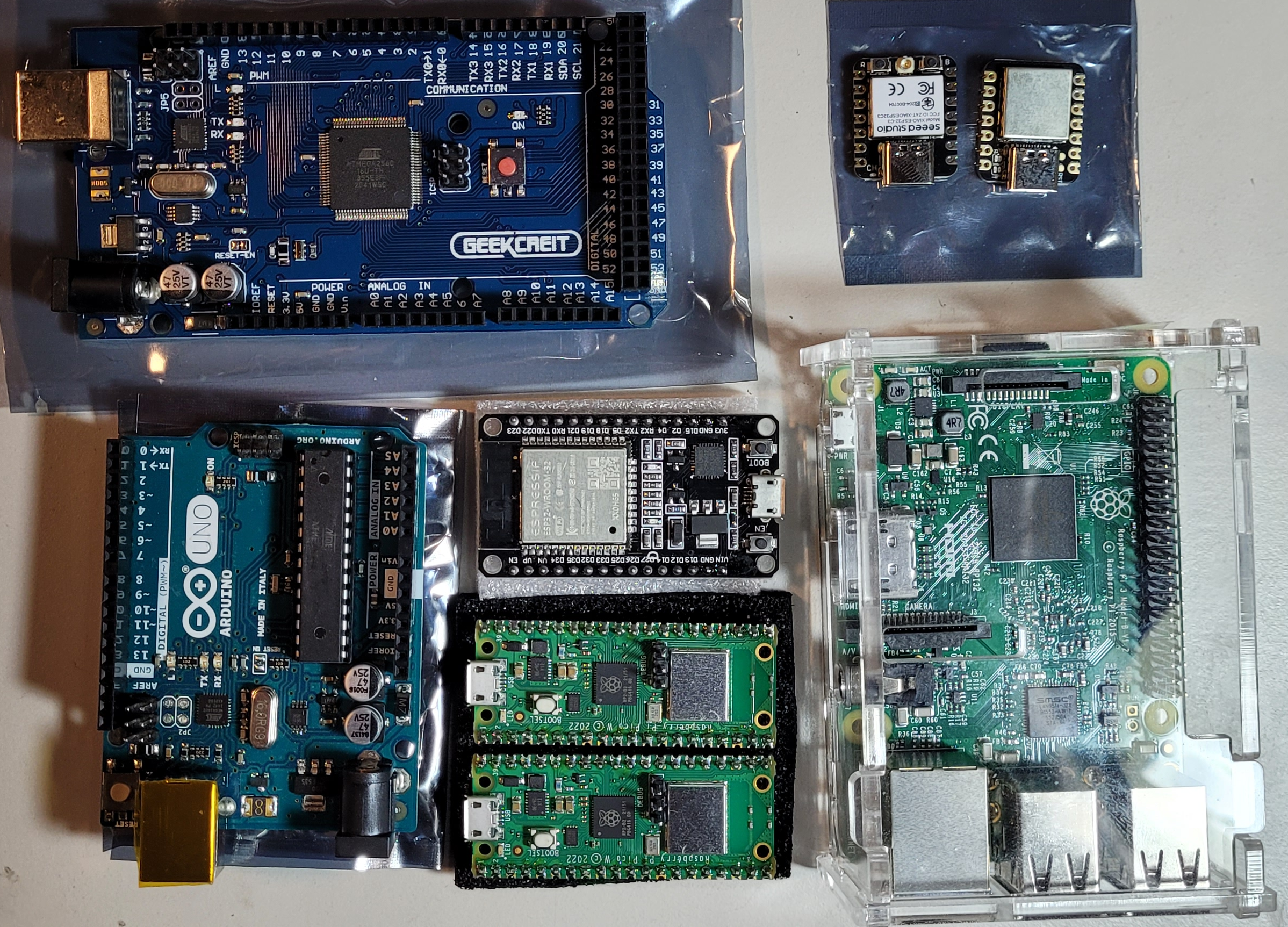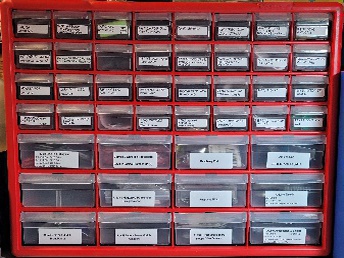|
|









MicroControllers
Over the last few years I've been accumulating a variety of Single Board Computers (SBC's) and microcontrollers to
experiment with during my retirement years. I had them all collected into several larger plastic storage bins (the clear plastic
ones from Costco) but soon realized it was getting difficult to remember what I had and then find something. I started
cataloging what was in each bin but that bacame tedeous trying to keep the list up to date when I moved things around to
reorganize.
Recently I decided to buy one of those nice AcroMils drawer cabinets (pictured above) to see if I could come up with a better method of organizing things so I could easily find a device or board when I needed to. This has worked out pretty well although I've discovered I already need another cabinet (and room to put it) to continue this method of organization with my growing collection of microcontrollers/SBC's and add-on boards (commonly called 'shields') and interface/HMI devices (in this case, small touch-screens).
Below are links to other related pages that will include projects, blogs, musings, etc.
Recently I decided to buy one of those nice AcroMils drawer cabinets (pictured above) to see if I could come up with a better method of organizing things so I could easily find a device or board when I needed to. This has worked out pretty well although I've discovered I already need another cabinet (and room to put it) to continue this method of organization with my growing collection of microcontrollers/SBC's and add-on boards (commonly called 'shields') and interface/HMI devices (in this case, small touch-screens).
Below are links to other related pages that will include projects, blogs, musings, etc.
Just a few of the SBC's and development boards I've collected so far
Latest method of organizing my boards and devices
Includes official Arduino boards, clones and some info on other boards and chips that speak Arduino.
RasPi board projects, applications, general info. I may also include other 'fruit pi' models here later.
This is a manufacturer of some really nice tiny SBC's and microcontroller/dev. boards.
Produces the popular Cubloc uController series as well as PLC and HMI products
MicroControllers, boards (Basic Stamp, Propeller), also modules, bots, displays, sensors.
Really cool tiny microcontroller modules, some with integral color displays.
Manufactures the PIC and Atmega microprocessor lines, used on many microcontroller modules.
Some info and links about some of the various communication protocols and uses.
Info on a few of the touch-screen and standard LCD graphic panels I have as well as text line panels.
Creators of the ESP8266 and ESP-32 microcontroller lines
Industrial control HMI's and PLC's aren't too difficult to work with once you understand 'Ladder Logic'





















